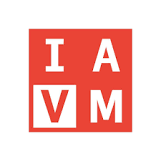By R.V. Baugus
IAVM member Jill Schinberg, Associate Professor in the Department of Arts Administration at the University of Kentucky, is leading a longitudinal study for IAVM that will provide data for future work on comparative analyses of sectors and regions within the IAVM membership as well as correlative data between demographic variables.
Schinberg has also been working closely with the Diversity and Inclusive Leadership Committee in  brainstorming the various components for this voluntary survey that IAVM members are strongly encouraged to take. Schinberg took some time to talk about the study and expectations that will come from it.
brainstorming the various components for this voluntary survey that IAVM members are strongly encouraged to take. Schinberg took some time to talk about the study and expectations that will come from it.
DESCRIBE WHAT THE STUDY IS.
This study aims to research the demographic makeup of IAVM members over several years. The most common demographic variables most of us encounter in various surveys usually include age, gender, and race or ethnicity. But identity is more complex than those three characteristics. We are also interested in IAVM members’ education and income levels, religious beliefs, native language(s), sexual orientation, disability status, and parental or caregiver responsibilities. Once we’ve collected enough data, we will have a better understanding of who the members of the association are and ultimately, how IAVM can serve them better. The study will officially launch at VC23 in Pittsburgh.
WHY IS THE STUDY BEING CONDUCTED?
IAVM has been conscientious in its efforts to be more inclusive and there are some great examples of that including the creation of the Diversity and Inclusive Leadership Committee (DILC), revisions to the board governance policies, and the distribution of diversity scholarships. Yet, there is currently no systematic way of knowing if initiatives like these have had any effect on the diversity of the membership base. So, by tracking demographic characteristics over time, we will be able to show how our association is becoming more inclusive (or not). Further, if the data show that there are obvious disparities or exclusions, IAVM can use this information to implement targeted initiatives and we‘ll be able to see whether they are effective as the longitudinal study continues.
WHEN WILL THE RESULTS BE KNOWN AND HOW WILL THEY BE SHARED?
The survey will occur once every three years over a twelve-year period. Data collection will end in September each year the survey is conducted. We will share a summary of each survey with IAVM members, and our analysis of the data and its implications will be published in academic journals. We are also prepared to offer webinars or conference sessions to discuss and answer questions about what we’re learning from the data if the board, programming committees, or members request it. Actually, this seems like a good time to say that everything about this study is anonymous. So, if you choose to participate (and we hope you do) your personal data will not be identifiable or shared–not even to the researchers.
HOW WILL IAVM MEMBERS BENEFIT?
According to the Greater Good Science Center at the University of California-Berkeley, “Diversity enhances creativity. It encourages the search for novel information and perspectives, leading to better decision making and problem solving.” In addition to the positive effects a diverse population can have in life and work, a more diverse IAVM member base is the first hurdle to a more inclusive association. And for our colleagues who might be members of historically underrepresented communities, a more inclusive association helps to reinforce the message that they belong.
You can help ensure that IAVM measures up to this task by taking the survey. Come see us in the IAVM education booth at VenueConnect for more information. Take the survey now by clicking here.
